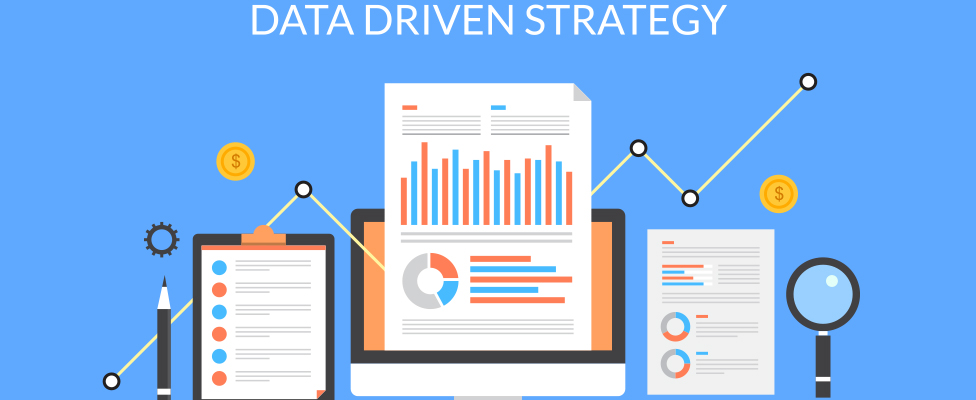
Achieving Customer Intimacy with Complete Data
If customer intimacy is your primary or secondary competitive strategy, analytics can give you the boost that you need to be successful in today's ultra-competitive marketplace.
- By Troy Hiltbrand
- September 10, 2018
To succeed in today's marketplace, your company must embrace a competitive strategy. In the book The Discipline of Market Leaders, authors Michael Treacy and Fred Wiersema describe three generic competitive strategies: operational excellence, customer intimacy, and product leadership. They argue that companies must achieve market leadership for one of these and perform adequately with the other two if they want to be successful.
The customer intimacy strategy focuses on offering personalized service and customized products. Companies that pursue this strategy bundle services and products into defined solutions designed specifically to target the individual customer's unique needs. Successful solution design requires companies to possess deep customer knowledge and insights.
To achieve this robust customer profile, your company needs to be able to analyze multiple sources of customer data and apply analytics methodologies to generate an action plan around caring for their personalized needs. First, inventory what data you have already collected in your enterprise systems (e.g., CRM, ERP, etc.) and then determine how to augment that data to paint a complete picture of your customers' needs.
Collected Data: Structured
Structured data is often defined as single value attributes in your relational database. This could contain data such as customer name, address, IP address, or login. Each customer will have multiple attributes of structured data that represent the basic context of who they are; these are normally collected as part of establishing the relationship between them as the customer and you as the company.
Collected Data: Unstructured
Unstructured data is data that exists in a textual or binary format and not as individual attributes as does structured data. This could include word documents, emails, or PDFs. Some values within the database, such as notes fields or log files, are also considered unstructured. To get value out of unstructured data, text processing such as sentence and word parsing, entity resolution, and concept disambiguation can transform the unstructured data into structured data. These methods can bring order to the unstructured data and format it, so it can be more effectively utilized to profile your customers.
Collected Data: Semistructured
Semistructured data is a hybrid of structured and unstructured data. The data is in a textual format but includes structure within the text as well. Examples of this are XML, JSON, or CSV. The metadata included in semistructured data can significantly help to convert the semistructured data to structured data for further processing. Technologies such as XQuery or JSON Query can isolate individual attributes within the semistructured data.
Observed Data
In addition to data you collect directly from the customer, you can garner significant data by analyzing observed customer behavior. This includes what customers are viewing on your website, what they are clicking on, what they are purchasing, and how they are interacting with your customer service reps. These transactions that represent behaviors can provide context about who your customers are and what they like and can help you customize your products.
Third-Party Purchased Data
If the data you possess does not provide the full context of who your customers are, you can also engage with third-party companies who can fill in the gaps. These companies provide data that you would not normally ask your customers about as part of their normal engagement with your company. This could include data such as occupation, income level, education level, and social media profile content. Third-party companies are data aggregators that harvest information from multiple sources to help you get a broader picture of who these individuals are. By marrying your collected and observed data with third-party data, your customer profile can become very robust.
Derived or Inferred Data
In addition to purchasing data from third parties, you can use analytics methods to infer attributes about your customers based on the data you possess. Attributes such as income level, gender, and age can be inferred based on attributes such as name, address and postal code, and buying habits. Care must be taken with derived attributes to validate whether assumptions in the inference process are correct and that the resulting action plan will not cause problems as you engage with your customers. Targeting a specific gender or age group could result in ostracizing individuals if those assumptions are incorrect or if your derivation of data comes across as creepy to your customer base.
Governance Considerations
With the adoption of the General Data Protection Regulation (GDPR), new stipulations are being enacted across the world about what data can be collected, stored, purchased, and derived and the customers' right to define what happens with their personal data. Although this law is only meant to protect citizens of the European Union, companion laws are being implemented in other regions of the world. As this trend grows, companies must take great care to balance their need to achieve customer intimacy with the rights of the customer to control their own personal data.
As you pull together a profile about each customer, you can better understand their needs and wants and customize both your engagement with them and the product solutions that you offer. As you leverage analytics to build out this profile, you will become more adept at the customer intimacy competitive strategy. Whether this is your primary or secondary competitive strategy, developing competencies in this arena through analytics will help you meet customers' needs and survive in a highly competitive market.
About the Author
Troy Hiltbrand is the senior vice president of digital product management and analytics at Partner.co where he is responsible for its enterprise analytics and digital product strategy. You can reach the author via email.